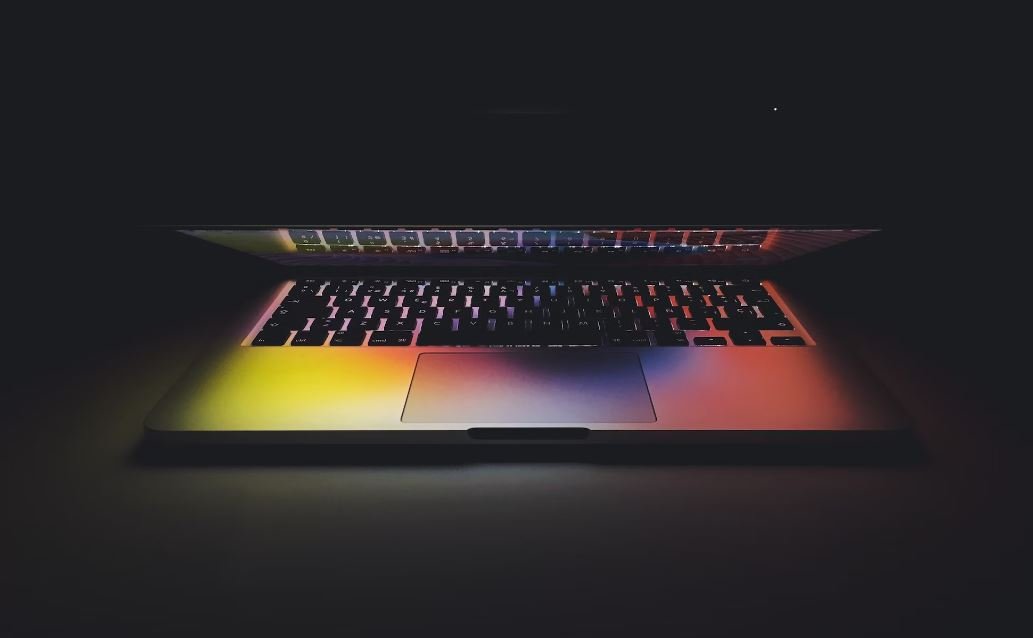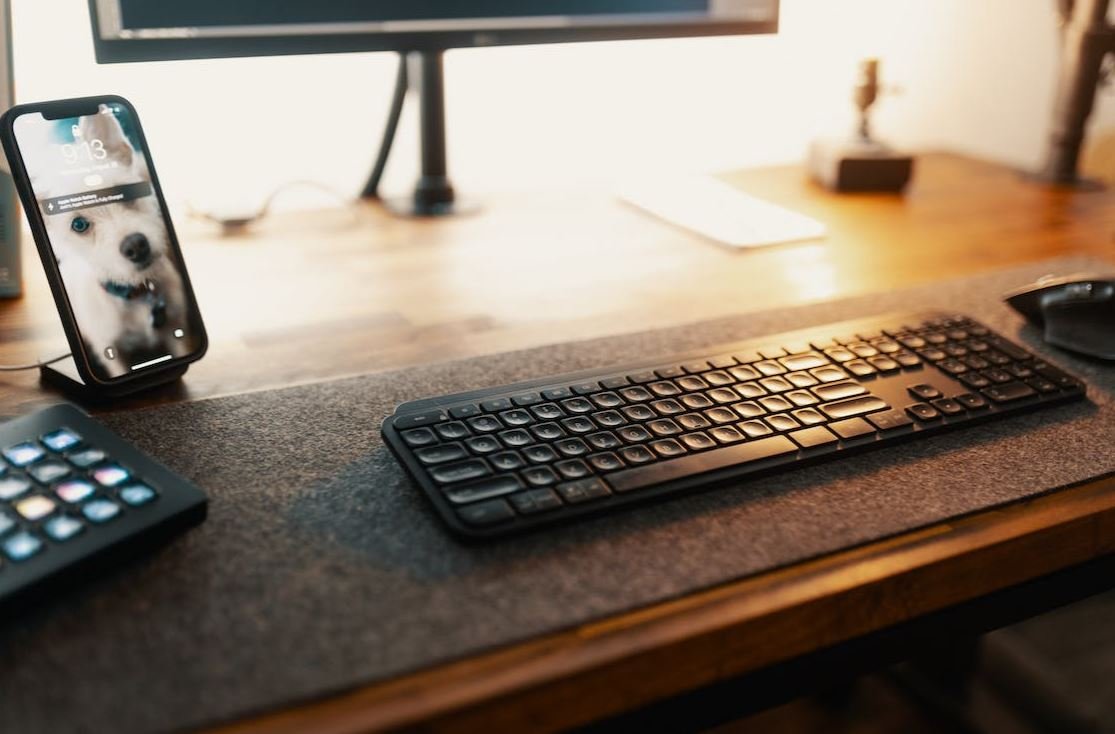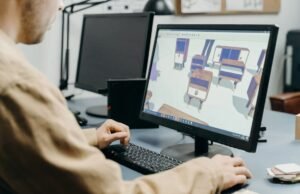Can Artificial Intelligence Be Creative?
In recent years, artificial intelligence (AI) has made significant advancements, raising questions about its potential to exhibit creativity. While AI has demonstrated impressive abilities in various fields, the concept of machine creativity remains a topic of debate. Can AI truly be considered creative? Let’s explore this intriguing question.
Key Takeaways
- Artificial Intelligence (AI) has become highly advanced but assessing its true creative capacity is debatable.
- AI can generate original content and imitate artistic styles, but the definition of creativity is subjective.
- Creative AI systems present exciting opportunities for industries such as art, music, and design.
- AI’s ability to create emotions and have genuine inspiration is yet to be fully understood.
- The human-AI collaboration may lead to new and innovative solutions.
The Nature of Creativity
Creativity is a complex and multifaceted concept that encompasses originality, imagination, and the ability to generate something novel and valuable. **AI’s role in creativity focuses on the generation and recombination of existing data to produce unique outputs**. The imitation of human artistic styles by AI algorithms has shown promising results, pushing the boundaries of what machines can achieve in terms of creative expression. *AI algorithms can learn patterns and apply them in unique ways, producing art that can captivate and surprise audiences*.
The Creativity Scale
When assessing AI’s creativity, it is important to consider the scale of creativity. On a spectrum ranging from **purely algorithmic generation** (low creativity) to **human-like inspiration and emotional expression** (high creativity), AI systems currently lean towards algorithmic generation. While they can produce original content, innovative problem-solving, and unique artistic compositions, there is an ongoing debate on whether AI can truly experience the emotional aspects of creativity that humans do. *Exploring the emotional capabilities of AI is an exciting area for future research*.
AI in Art, Music, and Design
AI’s capabilities have found remarkable applications in creative industries. In the field of art, AI has been able to generate stunning visual artwork, imitating famous artists’ styles, and expanding artistic possibilities. It can also autonomously compose music, creating harmonies and melodies that can rival human-composed pieces. Additionally, AI has aided designers by exploring countless design variations and generating new ideas, leading to innovative product development. *The collaboration between AI and humans in creative fields results in novel and unexpected outcomes*.
An Evolving Partnership
Rather than replacing human creativity, AI is more likely to enhance it. The collaboration between humans and AI systems is a powerful mechanism for innovation. With AI’s ability to process vast amounts of data and identify patterns quickly, it can provide valuable insights to humans and complement their creative process. The iterative feedback loop between AI and humans fosters continuous improvement and pushes the boundaries of what is possible. *The combined efforts of human ingenuity and AI’s computational power create an ever-evolving partnership*.
Table 1: Creativity Comparison
| Creativity Aspect | Human | AI |
|---|---|---|
| Idea Generation | Can generate new and innovative ideas based on experiences, emotions, and societal influences. | Can generate ideas based on patterns and data analysis, creating unique combinations and solutions. |
| Originality | Creates novel and unique creations, often drawing inspiration from various sources. | Is capable of producing original content by recombining existing data in new and interesting ways. |
Table 2: AI in Creative Industries
| Industry | AI Application |
|---|---|
| Art | AI can produce visually stunning artwork imitating famous artists and create new artistic possibilities. |
| Music | AI algorithms can autonomously compose music, rivaling human-composed pieces in terms of harmonies and melodies. |
| Design | AI aids designers by exploring countless design variations, generating new ideas, and contributing to innovative product development. |
Table 3: Human-AI Collaboration Benefits
| Collaboration Factor | Benefits |
|---|---|
| Data Processing | AI rapidly analyzes vast amounts of data, providing valuable insights to enhance human creative processes. |
| Idea Exploration | AI can generate numerous variations and combinations, guiding humans towards new and unexpected ideas. |
| Iterative Improvement | The feedback loop between humans and AI results in continuous improvement and pushes creative boundaries. |
Embracing the Future of Creativity
As AI continues to evolve, the potential for creative collaborations between humans and machines will expand. AI systems are becoming more sophisticated in imitating human creative styles, but the extent of their emotional and inspirational capacities is yet to be fully understood. *The future of creativity lies in finding innovative ways to leverage the strengths of AI alongside human imagination and intuition*. By embracing this partnership, we can unlock new frontiers in various creative domains and push the boundaries of what we believe is possible.

Common Misconceptions
Misconception 1: AI lacks the ability to be creative
- AI is often associated with logical thinking and problem-solving rather than creative tasks.
- Many believe that creativity is a uniquely human trait that cannot be replicated by machines.
- Some argue that since AI operates based on algorithms and pre-programmed information, it cannot produce original ideas.
Misconception 2: AI can only mimic existing creative work
- There is a prevailing belief that AI can only reproduce known patterns and cannot generate truly novel ideas.
- People often assume that AI-generated content lacks the depth and emotional resonance of human creativity.
- Many think that AI can only produce generic or formulaic creative outputs rather than pushing boundaries or challenging conventions.
Misconception 3: AI’s creative abilities threaten human creativity
- Some worry that as AI becomes more advanced, it will replace human creativity altogether.
- People fear that AI-generated content could devalue human-driven creative work, making it harder for artists and creatives to thrive in their fields.
- There is a misconception that AI’s efficiency and productivity in creative tasks will surpass human capabilities, rendering human creativity obsolete.
Misconception 4: AI lacks the intuition and subjective insights necessary for creativity
- Many believe that AI cannot comprehend complex emotions, abstract concepts, or subjective experiences required for creative thinking.
- There is a misunderstanding that AI lacks the ability to make connections and draw inspirations from diverse sources, limiting its creative potential.
- Some assume that AI operates solely on data and cannot tap into intuition or gut feelings, which are seen as critical in creative processes.
Misconception 5: AI’s creative outputs are purely based on algorithms and lack authenticity
- There is a perception that AI-generated content is purely formulaic, lacking the human touch and imperfections that add authenticity and uniqueness to creative works.
- Some believe that AI can only create outputs that align with predefined preferences, leading to a lack of originality and diversity in artistic expression.
- Many assume that AI’s creative outputs are deterministic and lack the element of surprise or unpredictability often associated with human creativity.

Introduction
Artificial Intelligence (AI) continues to advance at an astonishing rate, leading us to wonder if it has the potential to be creative. In this article, we explore various aspects of AI’s creative abilities. Through ten engaging illustrations, we delve into the fascinating world of AI and its potential for creativity.
Table: AI-Generated Paintings Recognized by Art Critics
AI algorithms have been utilized to create stunning and thought-provoking paintings. These AI-generated artworks have even garnered recognition from art critics, blurring the lines between human and machine creativity.
Table: Top AI-Generated Songs Reaching the Billboard Charts
In recent years, AI has proven its musical prowess by creating songs that have climbed the Billboard charts. These AI-generated tunes showcase the unlimited potential of machine creativity in the realm of music.
Table: AI-Designed Fashion Collections Displayed at Fashion Week
AI algorithms have been instrumental in designing high-fashion collections that have graced the runways of prestigious events like Fashion Week. This demonstrates AI’s knack for innovative and cutting-edge fashion design.
Table: AI-Authored Novels That Became Bestsellers
Through AI’s ability to analyze vast quantities of literature and language patterns, AI algorithms have authored novels that have captivated readers worldwide, even securing spots on bestseller lists.
Table: AI-Generated Sculptures Exhibited in Museums
The art world has embraced AI’s creative output through sculptures generated by AI algorithms. These sculptures have been displayed in renowned museums, highlighting AI’s capacity to produce captivating physical art forms.
Table: AI-Composed Symphonies Performed by Professional Orchestras
AI’s musical ingenuity extends beyond mere songs. Innovative AI algorithms have composed symphonies that have been performed by professional orchestras, earning them standing ovations and accolades.
Table: AI-Created Video Games with Millions of Users
AI’s capabilities have transcended the boundaries of traditional entertainment. AI-created video games have captivated millions of users across the globe, revolutionizing the gaming industry through their unique and immersive experiences.
Table: AI-Generated Gourmet Recipes Published in Culinary Magazines
AI algorithms have been instrumental in developing gourmet recipes that have been featured in renowned culinary magazines. These AI-generated recipes showcase the blending of flavors and innovative culinary techniques.
Table: AI-Produced Films Nominated for Academy Awards
AI’s role in the film industry has expanded rapidly, with AI-produced films earning prestigious nominations at the Academy Awards. These AI-infused creations demonstrate the potential of machine-driven creativity in filmmaking.
Table: AI-Engineered Innovations in Industrial Design
AI’s creative contributions extend beyond the realms of art and entertainment. Through AI-driven industrial design processes, groundbreaking innovations have been achieved, revolutionizing various sectors and enhancing our daily lives.
Conclusion
Artificial Intelligence has demonstrated extraordinary creative abilities across multiple industries. From art, music, and fashion to literature, gaming, and beyond, AI’s impact on human creativity is undeniable. As AI continues to evolve, we can expect even more astonishing creations and innovations that push the boundaries of what we consider “creative.” The symbiotic relationship between human imagination and AI’s computational power holds immense potential for the future.
Frequently Asked Questions
Can Artificial Intelligence Be Creative?
What is artificial intelligence?
Artificial Intelligence (AI) refers to the simulation of human intelligence in machines that are programmed to think and learn like humans. It encompasses various techniques that enable computers to perform tasks that typically require human intelligence, such as speech recognition, problem-solving, and decision-making.
Can AI systems exhibit creativity?
Yes, AI systems can exhibit creativity. While traditionally creativity was considered a domain exclusive to humans, AI has shown promising capabilities in generating novel and innovative ideas. Through advanced algorithms, machine learning, and deep neural networks, AI systems can generate original artistic works, compose music, write poetry, and more.
How can AI systems be creative if they lack consciousness?
Creativity does not necessarily require consciousness. AI systems do not possess consciousness or subjectivity, but they can analyze vast amounts of data, recognize patterns, and generate outputs based on learned knowledge. The creativity exhibited by AI is more akin to a pattern recognition and generation process based on algorithms and training data, rather than a conscious experience.
Can AI-generated art be considered original?
AI-generated art can be considered original in the sense that it is not a direct imitation or replication of existing works. However, it is important to recognize that AI systems learn from existing data and generate outputs based on that knowledge. Therefore, while the generated art may be unique, it is influenced by the input data and the algorithms used for learning, which raises some questions about the true “originality” of the AI-generated art.
Can AI algorithms compose original music?
Yes, AI algorithms can compose original music. By analyzing vast music libraries, recognizing patterns, and learning the rules of composition, AI systems can generate new musical pieces that follow established styles or even create unique compositions that push the boundaries of traditional music. However, the output is still based on existing patterns and learned knowledge.
Are there limitations to AI creativity?
Yes, there are limitations to AI creativity. While AI systems can generate impressive outputs, they lack human-like intuition, emotional understanding, and the ability to perceive abstract concepts. AI’s creativity is limited to processing and manipulating data based on predefined patterns and algorithms. It may lack the deeper understanding and context that human creatives bring to their work.
Can AI collaborate with human artists?
Yes, AI can collaborate with human artists. Many artists embrace AI as a tool to enhance their creative process. AI systems can provide new perspectives, generate ideas, and assist in the execution of artistic works. The combination of human creativity and machine-powered tools can lead to unexpected and groundbreaking artistic outputs.
Is AI creativity a threat to human creative professions?
AI creativity is not necessarily a threat to human creative professions. While AI systems can perform certain creative tasks, they do not possess the subjective experience, emotions, and contextual understanding that humans bring to their work. Human creativity, intuition, and the ability to interpret complex emotions and abstract concepts are still highly valued in creative professions. Instead of replacing human creatives, AI can be seen as a complementary tool that augments and expands human creative capabilities.
Could AI advance and redefine our understanding of creativity?
Yes, AI has the potential to advance and redefine our understanding of creativity. As AI continues to evolve, it challenges our notions of what it means to be creative. By demonstrating innovative outputs and uncovering new patterns and possibilities, AI can push the boundaries of creativity and encourage us to rethink traditional definitions. The integration of AI into creative processes and the exploration of AI-generated art offer new perspectives on the creative potential of both machines and humans.
How can AI-generated art impact the art industry?
AI-generated art has the potential to impact the art industry in various ways. It can introduce new styles and techniques, challenge existing artistic norms, and stimulate discussions about the role of machines in the creative process. It may also have implications for copyright and ownership, as AI creations blur the lines between authorship and the role of human creators. Additionally, AI-generated art can open up new revenue streams and opportunities for artists and collectors who embrace this emerging form of artistic expression.




